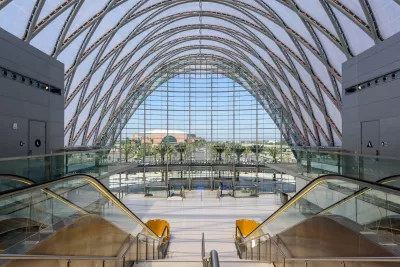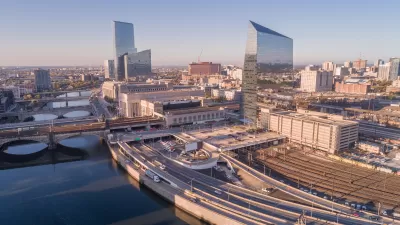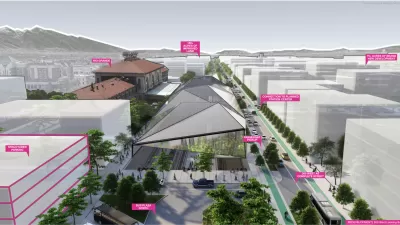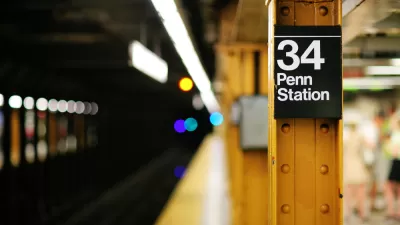Train-bus-bike connector stations have a long pedigree, and a reputation for anchoring neighborhood investment. But some criticize planned hubs for their perceived lavishness.

Following the tested example of New York's Penn Station, cities like North Charleston, Amarillo, and Anaheim are phasing in new "intermodal hubs" that combine rail, bus, and bike access to facilitate trips consisting entirely of non-auto modes. Supporters like Todd Litman, executive director of the Victoria Transport Policy Institute, argue that by improving the quality of transit trips on existing lines, cities can increase transit patronage.
Citing Anaheim's new ARTIC station, critics like UCI's Michael McNally call attention to costs ($188 million in ARTIC's case) and "the fact that ridership has not risen as dramatically as planners forecasted." Moreover, ARTIC includes luxury amenities like an oyster bar, which may be of questionable utility to transit patrons.
Litman disagrees, calling parking lots—especially those that are lit or covered, with courtesy signage—hubs for cars. "To encourage a true modal shift, he adds, 'we have to prioritize that level of convenience and comfort.'" Those who could afford to drive might then choose public options instead.
Note: Todd Litman is a longtime contributor and blogger for Planetizen. Check out his articles here.
FULL STORY: Are Intermodal Hubs Fancy Capital Projects or Anchors for Future Investment?

Maui's Vacation Rental Debate Turns Ugly
Verbal attacks, misinformation campaigns and fistfights plague a high-stakes debate to convert thousands of vacation rentals into long-term housing.

Planetizen Federal Action Tracker
A weekly monitor of how Trump’s orders and actions are impacting planners and planning in America.

In Urban Planning, AI Prompting Could be the New Design Thinking
Creativity has long been key to great urban design. What if we see AI as our new creative partner?

King County Supportive Housing Program Offers Hope for Unhoused Residents
The county is taking a ‘Housing First’ approach that prioritizes getting people into housing, then offering wraparound supportive services.

Researchers Use AI to Get Clearer Picture of US Housing
Analysts are using artificial intelligence to supercharge their research by allowing them to comb through data faster. Though these AI tools can be error prone, they save time and housing researchers are optimistic about the future.

Making Shared Micromobility More Inclusive
Cities and shared mobility system operators can do more to include people with disabilities in planning and operations, per a new report.
Urban Design for Planners 1: Software Tools
This six-course series explores essential urban design concepts using open source software and equips planners with the tools they need to participate fully in the urban design process.
Planning for Universal Design
Learn the tools for implementing Universal Design in planning regulations.
planning NEXT
Appalachian Highlands Housing Partners
Mpact (founded as Rail~Volution)
City of Camden Redevelopment Agency
City of Astoria
City of Portland
City of Laramie





























